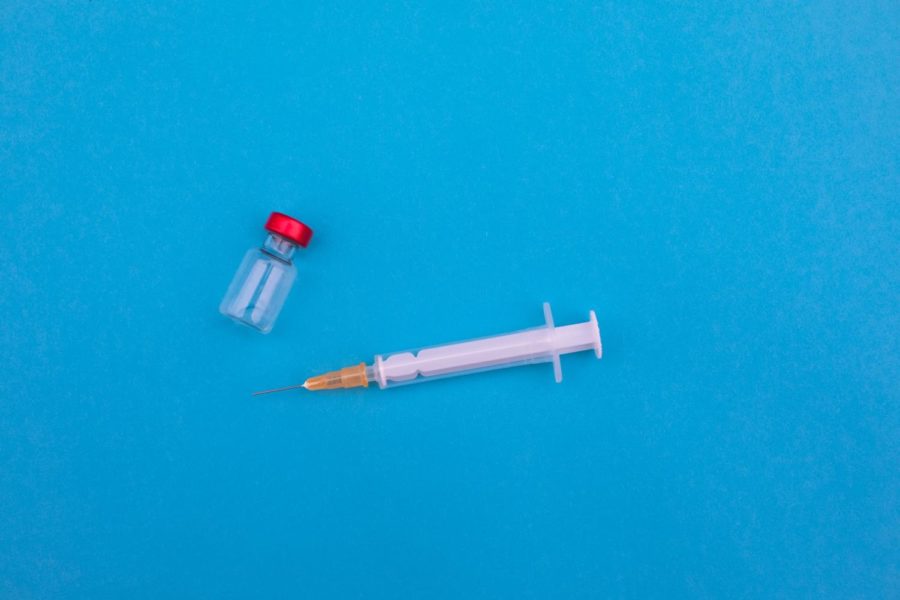Editorial: Vaccine distribution: What’s causing the delays?
February 9, 2021
The first COVID-19 vaccinations in the U.S. took place two months ago on Dec. 14. Since then, nearly every state struggled to deliver on the promises they made, and many people have been left waiting to get vaccinated despite a desperate need to be protected against COVID-19.
In Iowa, only 6 percent of the population to date has received their first vaccine. This puts Iowa in 47th place for “federal allocations of the vaccine per capita” and 46th place for the actual administration of the vaccines to citizens, according to Gov. Kim Reynolds.
A concerning issue with vaccine rollout is the number of vaccines actually available. In many states, only a limited number of doses are available for distribution. Iowa’s lack of ready-to-administer doses means many residents who are eligible for Phase 1B of vaccine distribution — which began Feb. 1 — are unable, and will remain unable, to receive their first vaccine.
A report from Feb. 4 revealed that nearly half of the 1,700 Iowa vaccine providers in the state are free to deny people appointments if they are not already customers of or doing business with the provider.
So far, there’s been very little communication and no type of statewide information campaign about the vaccine distribution plan. Iowans are currently suffering from a whole host of issues within the vaccine distribution framework, too many to even detail here. However, Iowa is not the only state that has struggled to provide adequate information and enough doses for all eligible residents.
Nearly all 50 states have reported shortages and delays in vaccine administration.
What is causing these delays? Shouldn’t we have a plan in place by now?
Well, no. Apparently not.
For the last month of the Trump administration, officials focused on delivering millions of doses of the vaccine — more than 14 million by the middle of January — across the U.S. After that, the Trump administration left the distribution and administration of vaccines largely up to the states, with little to no guidance, money or communication.
The result is a logistical nightmare. The U.S. lags far behind other nations in both manufacturing and distribution, and one can’t help but wonder why. Remember how our nation mobilized to try and produce personal protective equipment and masks? Where’s the same urgency with vaccines? They are, of course, much harder to manufacture and produce and easier to get wrong, but that should not be an obstacle for many major manufacturers.
Because of our fragmented administrative and health care systems, it’s likely there were always going to be delays and shortages, an unfortunate result of larger and systemic problems. However, as a nation, we can and should do better. There must have been a way to do better.
And while some will say it’s easy for us to criticize when we aren’t the ones planning out what is essentially a logistical nightmare even in the best of times — which is true — let’s not forget that the Trump administration didn’t even have a plan.
A year into the pandemic, months after the first vaccines entered clinical trials, the government of the United States has no plan to distribute these vaccines. What’s so incredible about this is that under the Trump administration, vaccines arrived quicker than many thought possible. And still, they did not develop a comprehensive, feasible plan to administer these vaccines.
It’s no wonder our nation is now scrambling to immunize our citizens.
So where do we go from here? In the midst of a tumultuous and seismic shift in White House leadership, what are the next steps for vaccine distribution?
The Biden administration recently ordered nearly 200 million more doses from Pfizer/BioTech and Moderna themselves, a move the Trump administration declined to make. This agreement should lessen the government’s reliance on outside manufacturers, hopefully rectifying a major manufacturing problem.
Another key aspect of the Biden administration’s vaccine plan is to increase supplies shipped to states by nearly 20 percent; in addition to this, they plan on making states aware of the number of doses they will be receiving three weeks in advance.
Finally, the Biden administration is utilizing the Defense Production Act to procure a special syringe that can extract more doses per vaccine vial, in addition to other raw materials.
Time will tell if these plans are enough to fix the immense problems in vaccine distribution. Already, vaccine supplies shipped to states are increasing, but it’s up to the Biden administration to centralize vaccine distribution and ensure states are delivering the vaccine to their residents.
For now, all we can do is continue to stay safe — social distance when you can, wear your mask and wash your hands.
And, when it’s your turn, get vaccinated. The only way out of this pandemic is for a majority of us to get vaccinated — when you finally get the opportunity, don’t pass it up.







